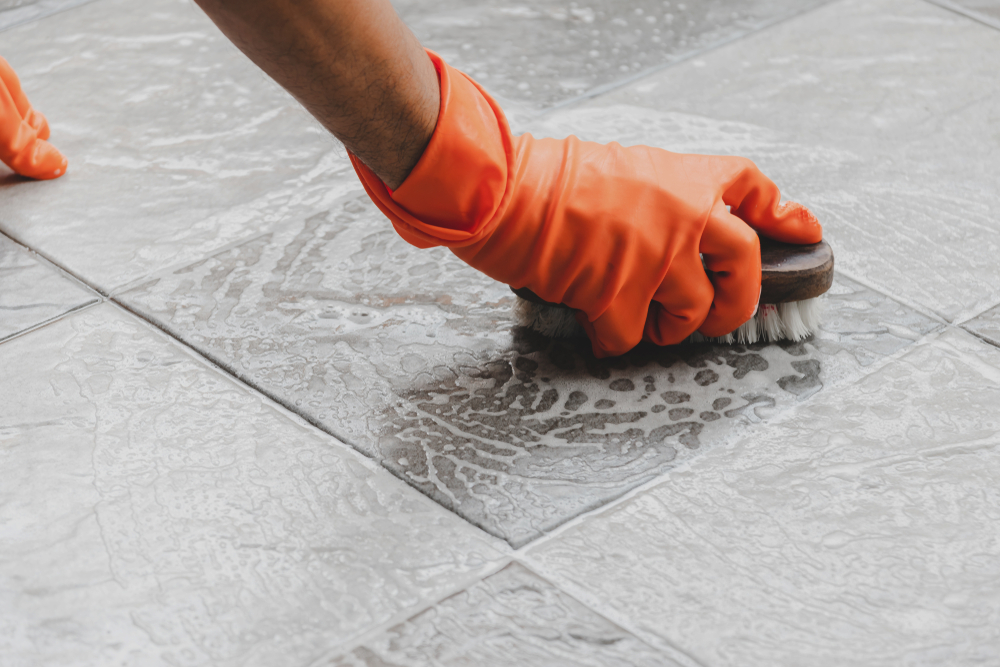If you’ve ever dealt with water seepage in your basement, you know how frustrating and persistent it can be. The constant dampness and musty odors can be quite a nuisance. But fear not, there are effective ways to tackle this issue. By addressing the root cause of seepage and implementing proper solutions, you can achieve a dry and stable environment in your home. So, how can you make sure that seepage becomes a thing of the past?
Identifying the Source of Seepage
- To pinpoint the exact source of seepage, conduct a thorough visual inspection of the affected area, focusing on any visible cracks or gaps in the structure. Seepage sources are often found near these openings where water can infiltrate. Moisture management is crucial in preventing further seepage issues. Look for signs of water stains, mold growth, or musty odors, as these can indicate areas of high moisture concentration. Pay close attention to areas where different building materials meet, such as corners and edges, as these junctions are common points of seepage entry.
- When inspecting the exterior, check for any damaged or deteriorating caulking around windows, doors, or vents. Ensure that gutters and downspouts are clear and functioning correctly to direct water away from the foundation. Inside, examine walls, ceilings, and floors for any discoloration or bubbling paint, as these can signal hidden water intrusion points.

Proper Exterior Drainage Solutions
- Consider implementing proper exterior drainage solutions to effectively manage water flow around your property and prevent seepage issues. Start by evaluating the landscape grading around your home. Ensure that the soil slopes away from the foundation to direct water away from the property. Proper grading can help prevent water from pooling near the walls and infiltrating into the basement.
- Additionally, consider sump pump installation as a proactive measure against seepage. A sump pump is a key component in managing excess water around the foundation. It collects water that accumulates in the sump basin and then pumps it away from the house, keeping the basement dry and free from seepage.
Interior Waterproofing Techniques
- Implement interior waterproofing techniques to effectively address seepage concerns within the basement or foundation of your property. Start by installing a vapor barrier on the interior walls to prevent moisture from seeping through. This barrier acts as a shield, keeping water away from the walls and reducing the risk of seepage.
- Additionally, consider installing a sump pump in the basement. A sump pump is a key component of interior waterproofing, as it helps to remove water that accumulates in the sump basin, preventing it from overflowing and causing seepage issues. Regular maintenance of the sump pump is crucial to ensure it functions optimally when needed.
- When implementing interior waterproofing techniques, it’s essential to address any cracks or leaks in the foundation walls promptly. These openings can allow water to seep into the basement, leading to moisture problems. By combining a vapor barrier, sump pump, and timely repairs to any wall imperfections, you can effectively combat seepage and maintain a dry, secure basement environment.
Foundation Repair and Sealing
- Repair and seal any cracks in your foundation promptly to prevent water seepage issues and maintain the structural integrity of your property. Foundation waterproofing is crucial in seepage prevention. Begin by inspecting your foundation for any visible cracks or gaps. Use a high-quality waterproof sealant to fill in these areas effectively. Pay special attention to areas where the foundation meets the walls and around any pipes or conduits entering the building.
- Additionally, consider applying a waterproof coating or membrane to the exterior of your foundation to provide an extra layer of protection against seepage. This can help divert water away from your foundation and prevent it from seeping into your property. Regularly inspect and maintain the foundation to ensure that it remains in good condition and continues to effectively prevent seepage. By taking these proactive measures, you can safeguard your property against water damage and maintain a dry and structurally sound foundation.
Maintenance Tips for Long-Term Prevention
- To maintain the effectiveness of your foundation repairs and sealing efforts, regularly inspect and upkeep the waterproofing measures to prevent seepage issues in the long term. Proper sealant application is crucial for ensuring that your foundation remains protected from water intrusion. Be vigilant in checking for any signs of wear or damage to the sealant and promptly reapply as needed.
- Additionally, focus on moisture control around your foundation to prevent seepage. Ensure that your gutters are clean and free of debris to allow for proper water drainage away from the foundation. Proper grading of the soil around your home can also help in directing water away from the foundation, reducing the risk of seepage. Regularly monitor the moisture levels in your basement or crawl space and use a dehumidifier if necessary to maintain optimal humidity levels.
Conclusion
To permanently stop seepage, it is important to follow a few key steps:
- First, identify the source of the seepage.
- Next, address any exterior drainage issues that may be contributing to the problem.
- Apply interior waterproofing techniques to further prevent water penetration.
- Lastly, repair any foundation cracks that may be allowing water to enter.
Regular maintenance is crucial in preventing future seepage issues. By taking these proactive steps, you can ensure a dry and structurally sound foundation for years to come.